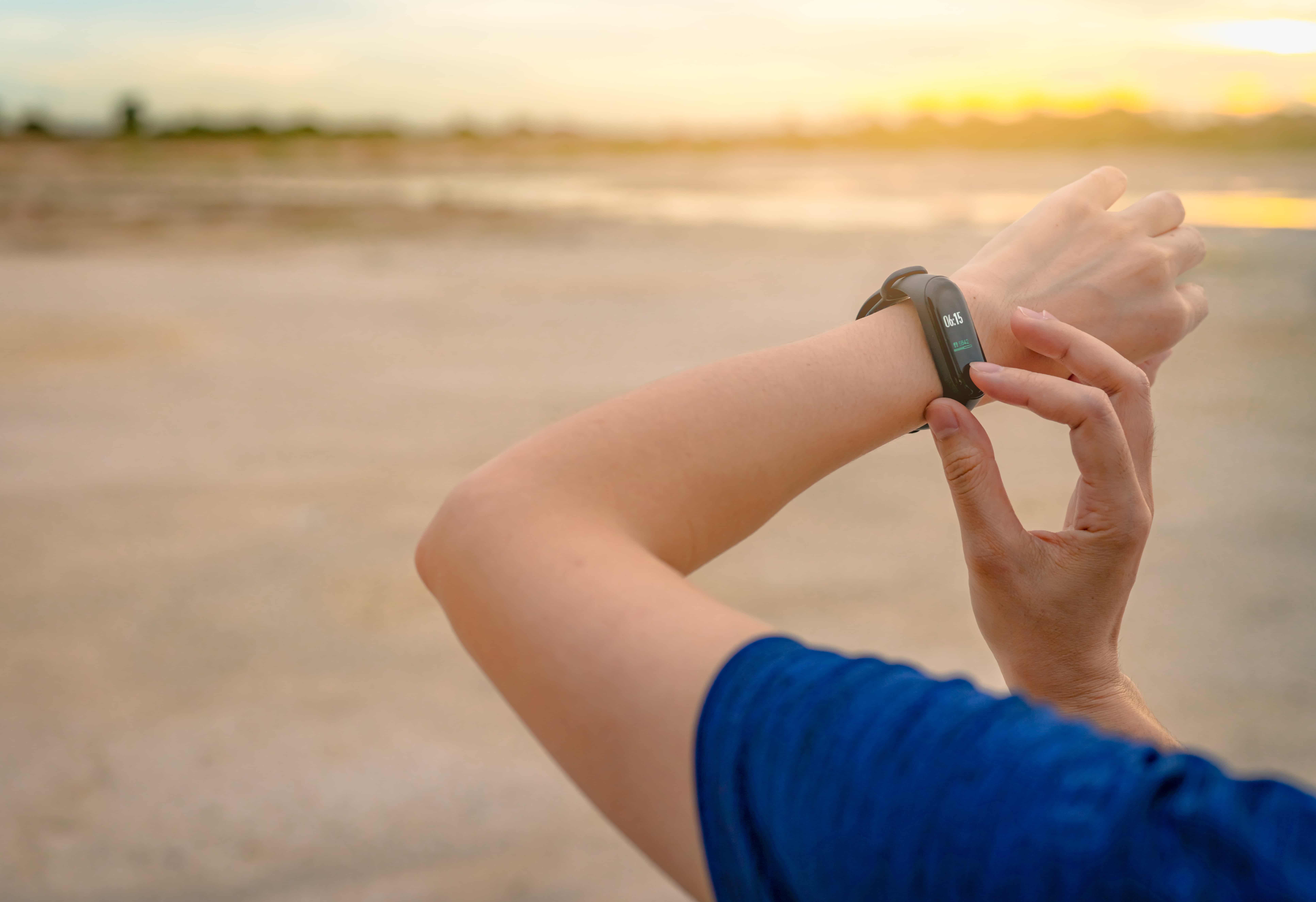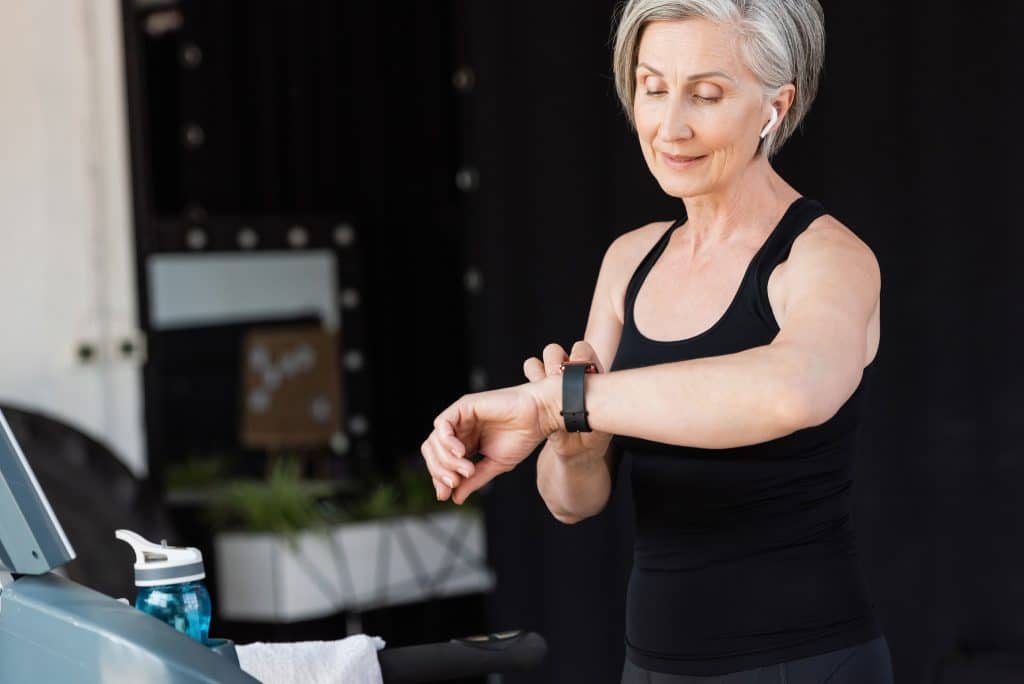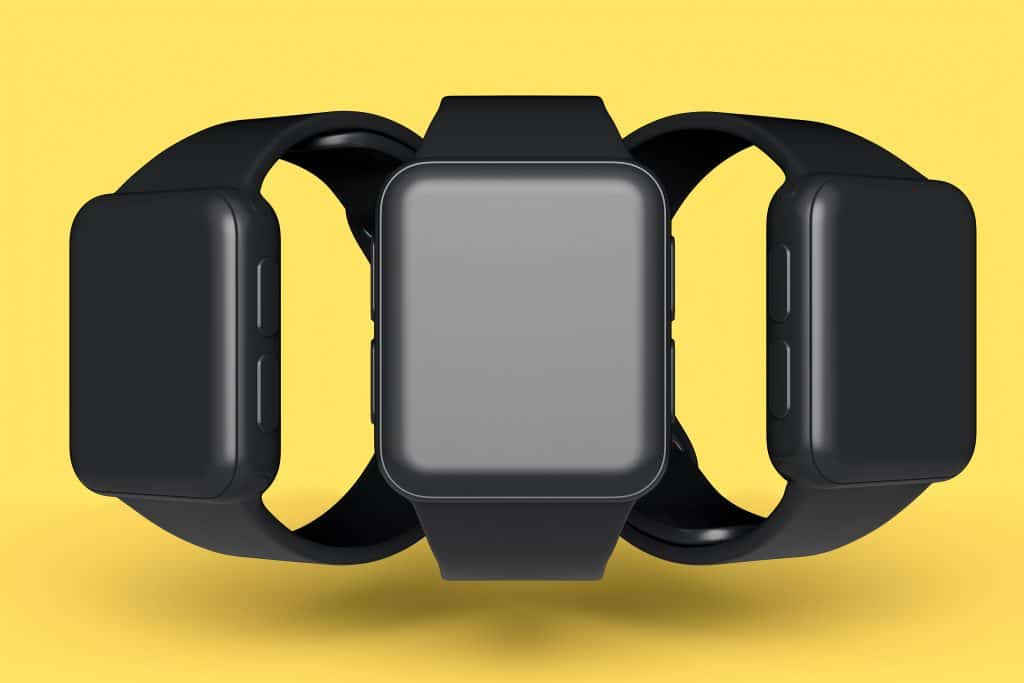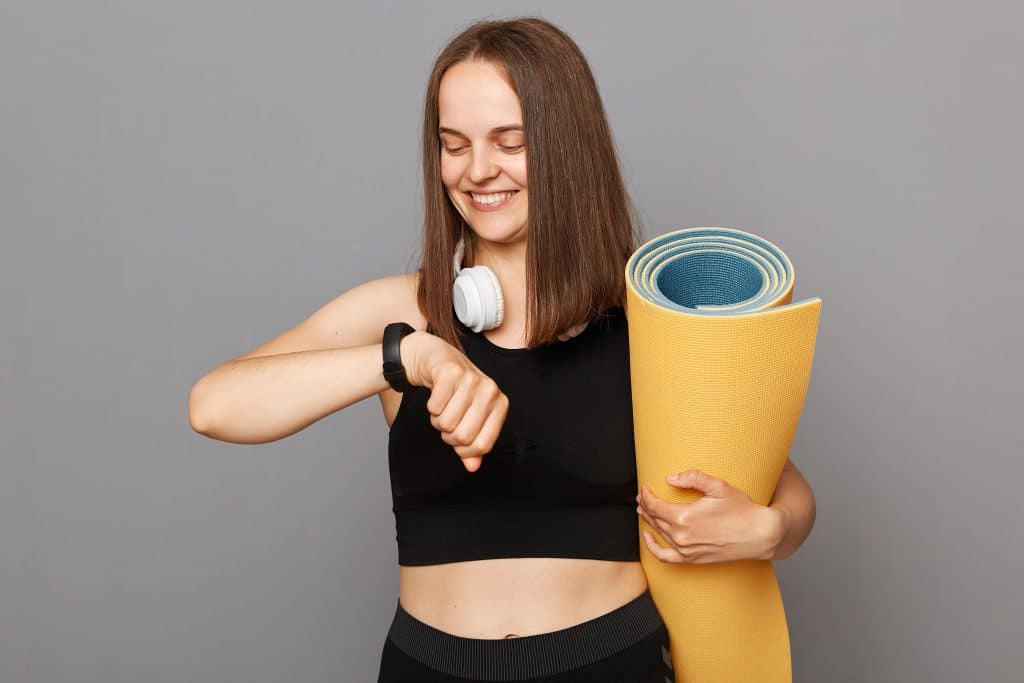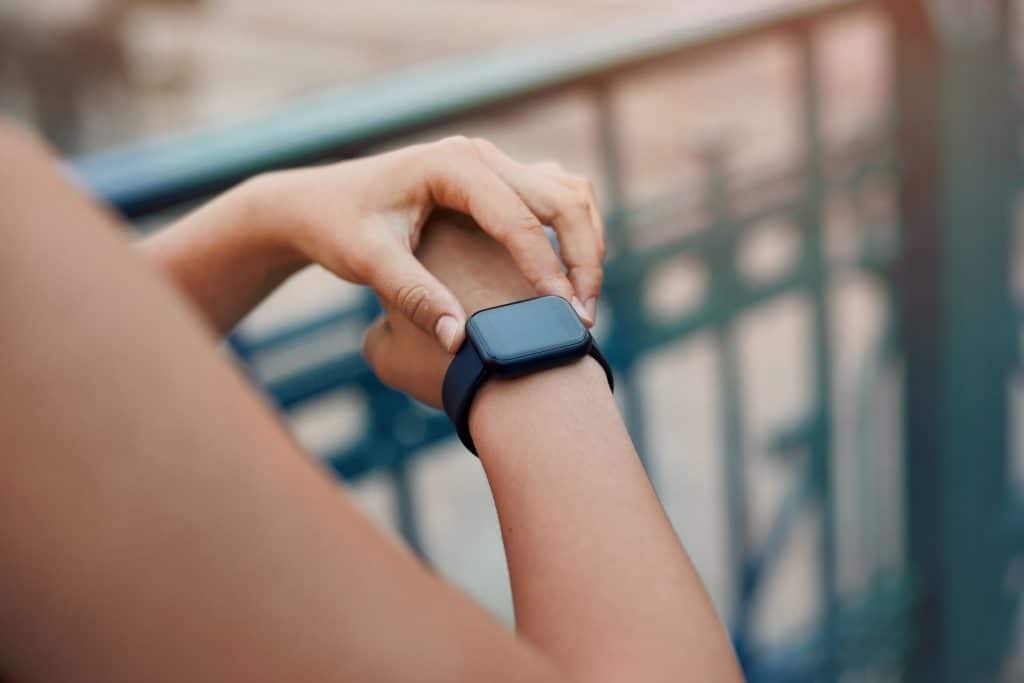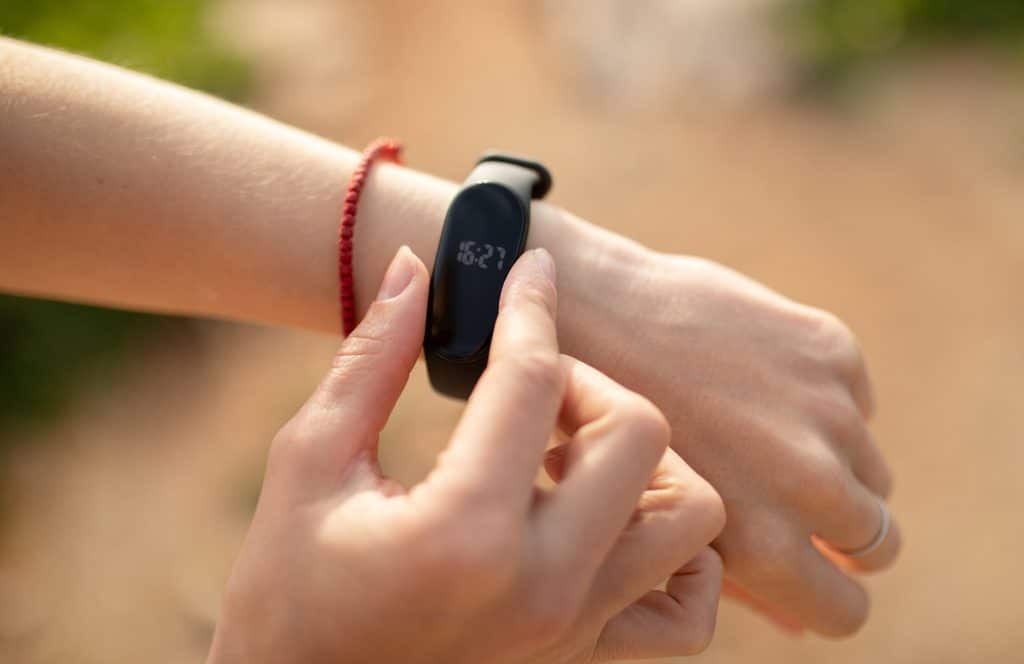Choosing the Right Fitness Tracker: An Expert’s Guide
Fitness trackers have become essential companions in our journey towards better health and fitness. These devices offer valuable insights into our daily activities, helping us make informed decisions about our well-being. Whether you’re a fitness enthusiast or looking to adopt a more active lifestyle, choosing the right fitness tracker can significantly impact your health and fitness goals. This expert guide will walk you through selecting the ideal fitness tracker.
This guide will give you the knowledge and insights to select a fitness tracker that complements your lifestyle and fitness goals. Whether you aim to track your steps, monitor your heart rate, or stay connected with innovative features, your fitness tracker will improve your health and well-being.
Introduction to Fitness Trackers
Health and fitness have become more crucial in today’s fast-paced world. The desire to maintain an active lifestyle and stay on top of our well-being has led to the rise of fitness trackers. These nifty devices have evolved from simple pedometers to sophisticated health monitoring tools, becoming integral to many people’s lives.
At their core, fitness trackers are wearable devices designed to monitor various aspects of your physical activity and health. They come in multiple styles and offer numerous features, making staying connected to your body and fitness goals more accessible. Whether you’re a seasoned athlete, a busy professional, or someone who wants to lead a healthier life, a fitness tracker is designed to meet your needs.
Critical Functions of Fitness Trackers:
- Step Counting: Most fitness trackers can count your daily steps, providing a fundamental measure of your physical activity.
- Heart Rate Monitoring: Many trackers now include optical sensors that measure your heart rate. This data can help you gauge your exercise intensity and track changes in your cardiovascular health.
- Calorie Tracking: By monitoring your physical activity and heart rate, fitness trackers can estimate the number of calories you burn during the day.
- Sleep Tracking: Some trackers have sensors that can monitor your sleep patterns. This data helps you understand the quality and duration of your sleep, aiding in better sleep management.
- Activity and Exercise Recognition: Modern fitness trackers can automatically recognize different activities, such as running, cycling, or swimming. They tailor their tracking to match your specific workout.
- GPS Integration: Certain trackers have built-in GPS or connect to your smartphone’s GPS. This feature allows for precisely tracking your routes and distances during outdoor activities.
- Health Metrics: Advanced fitness trackers can measure various health metrics like stress levels, skin temperature, and blood oxygen levels, providing a more comprehensive view of your well-being.
- Smartwatch Features: Many fitness trackers double as smartwatches, offering notifications, music control, and even mobile payment capabilities.
- Goal Setting and Motivation: Fitness trackers help you set fitness goals and provide real-time feedback on your progress, motivating you to achieve better results.
- Comprehensive Data Analysis: Most fitness trackers come with companion apps or software that analyze and present your data in an understandable format, allowing you to gain insights into your health and fitness trends.
In this guide, we will explore the world of fitness trackers in depth, helping you make an informed choice based on your needs and preferences. Whether you’re interested in tracking your daily steps, monitoring your heart rate, improving your sleep, or simply staying connected, the right fitness tracker can be a valuable tool in your journey toward a healthier and more active lifestyle.
Types of Fitness Trackers
Fitness trackers come in various forms and cater to different preferences and needs. Understanding the types of fitness trackers available can help you select the one that aligns with your fitness goals and lifestyle. Here are the primary types of fitness trackers:
1. Wrist-Based Fitness Trackers:
-
- Wrist-based fitness trackers are the most common and popular type. They’re worn like a watch and typically come in bands or smartwatches. These trackers offer many features, including step counting, heart rate monitoring, sleep tracking, and notifications. They are versatile and suitable for everyday use.
2. Clip-On Fitness Trackers:
-
- Clip-on fitness trackers are compact devices you attach to your clothing or belt. They are discreet and lightweight, making them suitable for individuals who don’t want to wear something on their wrists. While they usually provide basic tracking like step counts, some clip-on trackers offer advanced features.
3. Smartwatches:
-
- Smartwatches are wrist-based fitness trackers with a more extensive set of features. In addition to fitness tracking, they provide smartphone connectivity, app support, music control, and even mobile payment capabilities. Smartwatches are ideal for those who want a comprehensive wearable device that combines fitness and intelligent features.
4. GPS Fitness Trackers:
-
- GPS fitness trackers come with built-in GPS or the ability to connect to your smartphone’s GPS. This feature precisely tracks outdoor activities like running, cycling, and hiking. They are suitable for individuals who require accurate distance and route data.
5. Rugged or Outdoor Fitness Trackers:
-
- Designed for adventure and outdoor enthusiasts, rugged fitness trackers are built to withstand harsh conditions. They are durable and water-resistant and often include altimeters and barometers for tracking altitude and weather conditions.
6. Swim Trackers:
-
- Swim trackers are specifically designed for swimmers. They are waterproof and can track swimming metrics such as laps, strokes, and swim distance. These trackers are suitable for anyone who spends significant time in the pool.
7. Children’s Fitness Trackers:
-
- Fitness trackers for kids are designed with a child’s needs in mind. They typically offer basic tracking features, parental controls, and fun, colorful designs to encourage physical activity in children.
8. Medical or Health-Specific Trackers:
-
- Some fitness trackers are designed for medical or health-related purposes. These devices might monitor specific health metrics, such as blood pressure or glucose levels, and are often recommended or prescribed by healthcare professionals.
9. Fashion-Forward Trackers:
-
- Fashion-forward fitness trackers combine style and functionality. They prioritize aesthetics and may have customizable bands and watch faces. These trackers are for individuals who want to make a fashion statement while staying active.
10. Budget Fitness Trackers:
-
- Budget fitness trackers provide basic tracking features at an affordable price. They are suitable for individuals who want to get started with fitness tracking without breaking the bank.
Before selecting a fitness tracker, consider your specific needs and preferences. Do you want a versatile smartwatch, a discreet clip-on tracker, or a rugged outdoor device? Understanding the type of fitness tracker that suits your lifestyle will make your fitness journey more enjoyable and effective.
Key Features to Consider When Choosing a Fitness Tracker
Selecting the right fitness tracker involves assessing various features to ensure it aligns with your needs and preferences. Here are key elements to consider when choosing a fitness tracker:
1. Activity Tracking:
-
- The primary function of a fitness tracker is to monitor your daily activity. Ensure it counts steps accurately and tracks activities like walking, running, and cycling.
2. Heart Rate Monitoring:
-
- Heart rate monitoring is valuable for assessing exercise intensity and overall health. Look for continuous heart rate tracking, particularly during workouts.
3. GPS Capability:
-
- If you engage in outdoor activities like running or cycling, your smartphone’s built-in GPS or GPS connectivity can provide accurate distance and route tracking.
4. Sleep Tracking:
-
- Quality sleep is crucial for overall well-being. Choose a tracker that can monitor your sleep patterns, including the duration of different sleep cycles.
5. Calorie Tracking:
-
- Many fitness trackers estimate the calories burned during the day. This feature can help you manage your energy balance for weight management.
6. Water Resistance:
-
- If you plan to wear your tracker while swimming or during other water-related activities, opt for a model with water resistance.
7. Smart Notifications:
-
- Some fitness trackers can display smartphone notifications like calls, messages, and app alerts. Smart notifications keep you connected even during workouts.
8. App Compatibility:
-
- Ensure that the tracker is compatible with your smartphone and fitness apps. The ability to sync data with these apps enhances your tracking experience.
9. Battery Life:
-
- Longer battery life means less frequent charging. Consider your usage patterns and opt for a tracker with a battery that suits your needs.
10. Touchscreen or Button Controls:
-
- Choose a user interface that you find convenient. Touchscreen controls provide an intuitive experience, while buttons may be preferred for physical activities.
11. Design and Comfort:
-
- Assess the aesthetics and comfort of the tracker. You’ll wear it daily, so it should match your style and feel comfortable on your wrist.
12. Data Analysis:
-
- The companion app or software should offer comprehensive data analysis, allowing you to gain insights into your fitness and health trends.
13. Health Metrics:
-
- Some trackers offer health metrics like stress, skin temperature, and blood oxygen levels. These can provide a more comprehensive view of your well-being.
14. Goal Setting and Motivation:
-
- Trackers that enable you to set and achieve fitness goals, provide motivational reminders, and offer rewards can enhance your fitness journey.
15. Smartwatch Features:
-
- Consider a smartwatch if you want a device that combines fitness tracking with intelligent features like music control, mobile payments, and app support.
16. Price and Budget:
-
- Set a budget range and look for fitness trackers that offer the features you need within that range. Balance cost with features to find the right tracker for you.
17. Warranty and Support:
-
- Check the manufacturer’s warranty and customer support options if you encounter issues with your tracker.
Before choosing, prioritize the features that matter most to you based on your fitness goals and daily routine. A fitness tracker with the right features can be a valuable tool in helping you lead a healthier and more active life.
Accuracy and Precision in Fitness Trackers
Accuracy and precision are vital considerations when choosing a fitness tracker. These qualities directly impact the reliability of the data you receive and the effectiveness of your fitness journey. Here’s what you need to know about accuracy and precision in fitness trackers:
Accuracy:
- Step Accuracy: Step counting accuracy is a primary concern for many users. A good fitness tracker should be reasonably accurate in counting steps. However, no tracker is perfect, and variations may occur based on factors like the tracker’s placement and individual gait.
- Heart Rate Accuracy: Heart rate accuracy is crucial for tracking exercise intensity and estimating calorie burn. While wrist-based heart rate monitors have improved, chest strap monitors may need to be more accurate. If precision is essential for your workouts, consider a tracker that allows you to connect a chest strap for more accurate readings.
- GPS Accuracy: If your tracker uses GPS for outdoor activities, it should provide accurate distance and route tracking. Check reviews and user feedback to ensure the GPS is reliable.
Precision:
- Consistency: Precision in a fitness tracker refers to the device’s ability to provide consistent and repeatable measurements. A precise tracker consistently records data under similar conditions. For example, when measured multiple times, it should display the same heart rate during steady-state exercise.
- Data Resolution: The precision of a fitness tracker can also relate to the resolution of the data it provides. Some trackers offer more precise data, such as heart rate measurements with more data points per minute.
Factors Affecting Accuracy and Precision:
- Wrist Placement: The placement of your tracker on your wrist can affect accuracy. It’s essential to wear the tracker snugly but not too tight, ensuring proper contact with your skin for accurate heart rate measurements.
- Skin Type and Conditions: Individual factors, like skin type, can influence accuracy. People with darker skin may experience slightly lower accuracy with optical heart rate sensors.
- Activity Type: The type of activity you engage in can affect accuracy. Certain activities, like weightlifting, need to be more accurately tracked by some fitness trackers.
- Environmental Factors: Factors like extreme cold or wet conditions can influence the accuracy of GPS readings.
Considerations:
- If accuracy is a top priority, consider trackers with external sensors or the ability to connect to chest strap monitors. These options often provide more precise heart rate data.
- Read user reviews and expert assessments to gauge the accuracy and precision of specific fitness tracker models.
- Keep in mind that while accuracy is important, precision is also valuable. A tracker that consistently provides repeatable data, even if not perfectly accurate, can still be an effective tool for tracking trends in your fitness.
In summary, the accuracy and precision of a fitness tracker can significantly impact the reliability of the data it provides. Your choice of a fitness tracker should align with your specific needs, whether prioritizing heart rate accuracy for intensive workouts or focusing on consistency and trends over pinpoint precision.
Compatibility in Fitness Trackers
Compatibility is a critical consideration when choosing a fitness tracker. Ensuring your tracker works seamlessly with your devices and apps is essential for a smooth and integrated fitness tracking experience. Here’s what you need to know about compatibility:
1. Smartphone Compatibility:
- Most fitness trackers rely on smartphone apps for data storage and analysis. Ensure your chosen tracker is compatible with your smartphone’s operating system (iOS or Android). Some trackers may also work with Windows or other less common operating systems.
2. App Compatibility:
- Check if the fitness tracker’s companion app is available on your smartphone’s app store. The app should be user-friendly and offer robust data analysis and goal-setting features. Additionally, consider whether the app allows data sharing with other popular health and fitness apps, like Apple Health or Google Fit.
3. Wireless Connectivity:
- Many fitness trackers use Bluetooth to sync data with your smartphone. Ensure your smartphone has Bluetooth capabilities and the tracker supports the relevant Bluetooth version (e.g., Bluetooth 4.0 or later).
4. Compatibility with Other Devices:
- If you have other smart devices like tablets, smartwatches, or home fitness equipment, check whether your fitness tracker can sync with or control these devices. Integration with a broader ecosystem can enhance your tracking experience.
5. Cloud Storage:
- Some fitness trackers offer cloud storage options for your data. This allows you to access your fitness data from different devices and locations. Ensure the tracker’s cloud service is compatible with your preferred devices.
6. Computer Compatibility:
- If you prefer to analyze your fitness data on a computer, check whether the tracker supports computer syncing and has compatible software for data transfer.
7. Third-Party App Integration:
- Some fitness trackers allow you to connect with third-party apps or services, like Strava for runners or MyFitnessPal for nutrition tracking. This can be beneficial if you have specific preferences for tracking certain aspects of your health and fitness.
8. Device Firmware Updates:
- Fitness trackers may receive firmware updates to improve performance and add new features. Ensure that the tracker’s manufacturer regularly releases updates and that your devices can receive and install these updates.
9. Cross-Platform Compatibility:
- If you use iOS and Android devices, consider a fitness tracker with cross-platform compatibility. This ensures that you can switch between devices without losing your fitness data.
10. Compatibility with Wearables:
– Compatibility with your fitness tracker can enhance your overall wearable experience if you own other wearables like smartwatches or wearables.
Before purchasing a fitness tracker, thoroughly research its compatibility with your devices and preferences. Ensure the tracker can seamlessly connect to your smartphone, sync with your preferred apps, and provide the level of integration you desire. A compatible fitness tracker will enable you to track and manage your fitness journey effortlessly.
Battery Life in Fitness Trackers
Battery life is a crucial factor to consider when selecting a fitness tracker. The duration a fitness tracker can operate on a single charge impacts your overall user experience and convenience. Here are key considerations related to battery life:
1. Battery Type:
- Fitness trackers typically use rechargeable lithium-ion or lithium-polymer batteries. These batteries are a lightweight, efficient, and reliable power source for your tracker.
2. Battery Life Expectations:
- Battery life can vary significantly among different fitness tracker models. Some trackers can last several days on a single charge, while others may need to be charged daily.
- A tracker’s specific features and sensors can impact its battery life. Devices with GPS, heart rate monitoring, and constant notifications tend to have shorter battery life than basic trackers.
3. Charging Methods:
- Pay attention to the charging methods required for your fitness tracker. Most trackers use a magnetic charging cable or a clip-on charger. Consider how convenient the charging process is for your daily routine.
4. Battery Saver Modes:
- Some fitness trackers offer battery-saver modes that limit certain features to extend battery life. You can activate these modes when your tracker needs to last longer between charges.
5. Standby Time:
- Besides the active battery life, assess the tracker’s standby time. This is when the device can sit idle without tracking activity and retain battery power. A longer standby time can be beneficial if you don’t continuously use your tracker.
6. User Habits:
- Your usage habits play a significant role in determining how long the battery lasts. Frequent features like heart rate monitoring or GPS will drain the battery faster.
7. Battery Replacement:
- In most fitness trackers, the batteries are integrated and not user-replaceable. Consider the longevity of the tracker and the manufacturer’s battery replacement policies.
8. Manufacturer Claims vs. Real-Life Usage:
- Manufacturer-stated battery life may not always align with real-life usage, as it’s based on ideal conditions. Reading user reviews and seeking real-world feedback can provide a more accurate assessment of a tracker’s battery performance.
9. Battery Maintenance:
- Proper battery maintenance can help prolong its lifespan. Avoid extreme temperatures and follow the manufacturer’s guidelines for charging and storage.
10. Quick Charging:
– Some fitness trackers support quick charging, which gives you a significant battery life with a short charging session. This can be handy if you need a quick boost.
Before purchasing a fitness tracker, consider how often you’re willing to charge it and whether you prefer a longer battery life or a feature-rich device with a shorter battery duration. Consider your daily routine and usage patterns to find a fitness tracker with a battery life that suits your needs and preferences.
Water Resistance in Fitness Trackers
Water resistance is a crucial feature in fitness trackers, particularly if you plan to use your device during water activities or want to wear it in various weather conditions. Understanding water resistance ratings and how they apply to fitness trackers is essential. Here’s what you need to know:
1. Water Resistance Ratings:
- Fitness trackers are typically rated on the Ingress Protection (IP) scale, which classifies the degree of protection provided against the intrusion of solid objects and liquids. The format is usually “IPX,” where the “X” represents the water resistance rating.
2. IPX Ratings:
- IPX0: No protection; not water-resistant.
- IPX1: Water dripping vertically onto the device has no harmful effect.
- IPX2: Water dripping at a 15-degree angle has no harmful effect.
- IPX3: Water spraying at an angle up to 60 degrees has no harmful effect.
- IPX4: Splashing water from any direction has no harmful effect.
- IPX5: Water jets from any direction have no harmful effect.
- IPX6: Powerful water jets have no harmful effects.
- IPX7: Temporary immersion (up to 1 meter) for 30 minutes has no harmful effect.
- IPX8: Continuous immersion beyond 1 meter under conditions specified by the manufacturer.
3. Activities and Water Resistance:
- If you plan to swim or engage in water sports, consider a fitness tracker with at least an IPX7 or higher rating. This ensures that the tracker can withstand submersion without damage.
- An IPX4 or higher rating is sufficient for everyday activities like handwashing to protect the tracker from splashes.
4. Pool vs. Open Water Swimming:
- Check whether your tracker’s water resistance suits pool and open-water swimming. Some devices may be rated for one but not the other.
5. Maintenance After Water Exposure:
- After exposure to water, it’s important to rinse and dry your fitness tracker to prevent long-term damage or corrosion, especially if it’s been in saltwater.
6. Manufacturer Guidelines:
- Always follow the manufacturer’s guidelines regarding water exposure. Some trackers may have limitations on water temperature or depth.
7. Straps and Bands:
- The water resistance rating often applies to the tracker’s main unit and not necessarily to the bands or straps. Be cautious about exposing non-water-resistant bands to water.
8. Recognizing Limitations:
- Understand that even if a fitness tracker is water-resistant, it might not be suitable for activities like scuba diving or activities involving extreme water pressure.
9. Durability in Harsh Conditions:
- If you plan to use your fitness tracker in extreme conditions, such as saltwater or heavily chlorinated pool water, choose a higher water resistance rating device to ensure durability.
Before using your fitness tracker in water, carefully review its water resistance rating and follow the manufacturer’s guidelines to avoid damaging the device. Choosing a fitness tracker with an appropriate water resistance rating for your intended activities ensures it can withstand your active lifestyle without issues.
Design and Comfort in Fitness Trackers
The design and comfort of a fitness tracker play a significant role in your overall satisfaction with the device. Here are key considerations related to design and comfort:
1. Band Material:
- The band is the part of the tracker that comes into direct contact with your skin. The material should be comfortable, hypoallergenic, and durable. Common band materials include silicone, rubber, leather, and metal. Choose a material that suits your style and doesn’t cause skin irritation.
2. Band Size and Adjustability:
- Ensure the fitness tracker’s band is available in sizes that fit your wrist comfortably. Some bands are adjustable, while others come in different sizes, so measure your wrist or try on the tracker before purchasing.
3. Clasp or Closure Type:
- The type of clasp or closure can affect both comfort and security. Options include traditional buckles, watch-style clasps, and magnetic closures. Choose one that suits your preference and provides a secure fit.
4. Display Type and Size:
- The display is where you’ll view your fitness data. Consider the display size and whether it’s readable in various lighting conditions. Choose between monochrome and color displays and touchscreen or button controls based on your preferences.
5. Slimness and Weight:
- The slimness and weight of the fitness tracker are essential for comfort during wear. A lightweight, slim design is less intrusive and more comfortable for extended use.
6. Customizability:
- Some fitness trackers offer customizable bands and watch faces. This allows you to personalize the tracker’s appearance to match your style.
7. Display Always-On Option:
- Some trackers have an always-on display option, allowing you to check the time and your stats without raising your wrist or tapping the screen. This can be convenient for glances.
8. Button and Screen Sensitivity:
- If your fitness tracker has a touchscreen, assess its responsiveness and sensitivity. You’ll want a screen that accurately registers your taps and swipes.
9. Water Resistance and Durability:
- If you plan to wear your fitness tracker in water or harsh conditions, ensure it’s water-resistant and durable. The design should prevent moisture and debris from entering the device.
10. Aesthetics:
– Consider your personal style preferences. Some fitness trackers have a sporty look, while others are more elegant and suitable for formal occasions.
11. Screen Visibility:
– Evaluate how well the screen is visible in different lighting conditions, especially in direct sunlight. An adjustable brightness level can enhance visibility.
12. Interchangeable Bands:
– Some fitness trackers allow you to switch bands, which can help change your tracker’s look or replace a worn-out band.
13. Special Features:
– Special features like a built-in GPS, a color display, or additional sensors can impact the design and comfort of the tracker. Consider whether these features are essential to you.
14. Brand Reputation:
– Choose a fitness tracker from a reputable brand known for quality and customer satisfaction. This ensures that the design and comfort aspects meet high standards.
15. User Reviews:
– Reading user reviews and trying on the tracker in-store can provide insights into the actual comfort and design of the device.
Remember that the design and comfort of your fitness tracker will affect how often you wear it and, consequently, how effective it is in helping you track your fitness goals. Find a tracker that suits your style and is comfortable for all-day wear.
Data Tracking and Analysis in Fitness Trackers
Effective data tracking and analysis are essential for making the most of your fitness tracker. Here’s what you should know about this crucial aspect:
1. Activity Tracking:
- Most fitness trackers monitor basic activities like steps taken, distance traveled, and calories burned. Ensure that your tracker is accurate in counting these metrics.
2. Heart Rate Monitoring:
- Heart rate data provides insights into exercise intensity and can help estimate calorie burn more accurately. Check if your fitness tracker monitors your heart rate during workouts and at rest.
3. Sleep Tracking:
- Quality sleep is vital for overall health. Look for a fitness tracker that provides detailed sleep tracking data, including the duration of various sleep stages (light, deep, REM) and insights to improve sleep patterns.
4. GPS Tracking:
- If you engage in outdoor activities like running or cycling, a built-in GPS or the ability to connect to your smartphone’s GPS is crucial for accurate distance and route tracking.
5. App Integration:
- The companion app of your fitness tracker should offer robust data analysis and visualization. Look for an app to view trends and progress over time. Consider if the tracker syncs with other popular health and fitness apps you already use.
6. Goal Setting:
- Your tracker should enable you to set fitness goals, whether a target number of steps, active minutes, or specific weight management goals. The ability to customize goals keeps you motivated.
7. Real-Time Feedback:
- Some trackers provide real-time feedback, like vibrations or on-screen messages, to keep you informed about your progress or prompt you to stay active.
8. Historical Data:
- Historical data tracking lets you compare your current activity and health metrics with records. This feature can help you track trends and improvements over time.
9. Advanced Metrics:
- If you’re interested in advanced health metrics like stress levels, skin temperature, or blood oxygen levels, choose a tracker with these features.
10. Data Security and Privacy:
– Consider the security and privacy of your data. Ensure that the manufacturer and app provider have robust data protection measures.
11. Compatibility with Other Devices:
– Some fitness trackers integrate with other smart devices like scales or blood pressure monitors, allowing you to consolidate health data in one place.
12. Data Export:
– Check if your fitness tracker allows you to export your data, which can be useful for sharing with healthcare professionals or personal analysis.
13. Analysis Tools:
– The companion app should offer tools for analyzing your data. This could include graphs, charts, and visual representations of your progress.
14. Feedback and Recommendations:
– Some fitness trackers provide personalized feedback and recommendations based on your activity and health data. This can be valuable for reaching your goals.
15. Community and Social Features:
– Some apps offer social features, like challenges or the ability to connect with friends, to enhance motivation.
The effectiveness of your fitness tracker depends on its ability to accurately track your activities and provide meaningful insights through data analysis. Before purchasing, review the tracking capabilities, and data analysis features to ensure they align with your fitness goals and needs.
Goal Setting and Motivation in Fitness Trackers
Goal setting and motivation features are key components of many fitness trackers. They help you stay on track, measure your progress, and encourage you to achieve your fitness objectives. Here’s what you need to know about these aspects:
1. Goal Customization:
- Look for a fitness tracker that allows you to set personalized fitness goals. These could include daily step counts, active minutes, calorie burn targets, or specific distance goals. Customization ensures that your tracker aligns with your unique fitness aspirations.
2. Progress Tracking:
- The ability to track your progress is crucial. Check if your fitness tracker provides real-time data on how close you are to meeting your goals. This can include on-screen notifications, mobile app alerts, or vibration reminders.
3. Goal Achievement Celebrations:
- Some fitness trackers celebrate your achievements with on-screen badges, animations, or notifications when you reach your goals. These small rewards can be motivating.
4. Reminders and Alerts:
- Reminders to move, exercise, or reach your daily goals can be set in many fitness trackers. These prompts help you stay on track throughout the day.
5. Adaptive Goals:
- Advanced fitness trackers adjust your goals based on your activity levels and progress. For example, if you consistently surpass your step goal, the tracker may increase the target to challenge you.
6. Historical Data Comparison:
- The ability to compare your current progress with past data can be highly motivating. Fitness trackers often provide historical data that lets you see how far you’ve come.
7. Challenges and Competitions:
- Some fitness tracker apps offer challenges and competitions that allow you to compete with friends or other users. These social features can boost motivation.
8. Social Sharing:
- Sharing your achievements and progress on social media or within a fitness tracker’s community can provide a sense of accountability and encouragement from friends and peers.
9. Data Insights:
- Many fitness trackers provide insights based on your activity and health data. These insights may suggest changes or improvements in your routine to help you reach your goals.
10. Feedback and Recommendations:
– Feedback on your activity and health data, along with recommendations for improvement, can be motivating. Some trackers provide personalized guidance based on your performance.
11. Goal Realism:
– Ensure your fitness goals are realistic and attainable. While it’s great to challenge yourself, setting unattainable goals can lead to discouragement. A good tracker helps you find the right balance.
12. Positive Reinforcement:
– Look for a fitness tracker focusing on positive reinforcement rather than punitive feedback. Encouragement is often more effective for maintaining motivation.
13. Community and Social Features:
– Connecting with friends or other users through a fitness tracker’s social features can provide motivation and accountability.
14. Habit Tracking:
– Some fitness trackers go beyond activity goals and allow you to track habits like water intake or healthy eating. These features can support a holistic approach to fitness.
Motivation is a key factor in achieving and maintaining your fitness goals. Choosing a fitness tracker with robust goal-setting and motivation features can help you stay on track, celebrate your achievements, and find the inspiration to keep pushing toward a healthier lifestyle.
Health and Wellness Features in Fitness Trackers
Fitness trackers increasingly incorporate health and wellness features to provide a more holistic view of your overall well-being. Here’s what you should know about these features:
1. Heart Rate Monitoring:
- Many fitness trackers now include continuous heart rate monitoring. This feature provides insights into your resting heart rate, exercise intensity, and cardiovascular health.
2. Stress Tracking:
- Stress tracking measures your stress levels based on heart rate variability or other physiological indicators. This feature can help you manage and reduce stress for better overall health.
3. Sleep Tracking:
- Sleep tracking records your sleep patterns, including the duration of different sleep stages (light, deep, REM), and provides insights into sleep quality. A good night’s sleep is essential for physical and mental well-being.
4. Blood Oxygen (SpO2) Monitoring:
- Some fitness trackers measure blood oxygen levels. This is important for understanding respiratory health and detecting issues like sleep apnea.
5. Menstrual Cycle Tracking:
- Some fitness trackers offer menstrual cycle tracking, which can be beneficial for women to monitor and predict their menstrual cycles, ovulation, and related symptoms.
6. Calorie Tracking:
- Calorie tracking estimates the number of calories burned during activities and throughout the day, helping with weight management and nutrition goals.
7. Hydration Tracking:
- Monitoring your daily water intake is essential for staying adequately hydrated. Some trackers allow you to set water consumption goals.
8. Guided Breathing and Relaxation Exercises:
- Guided breathing exercises and relaxation routines can help manage stress and promote mindfulness and relaxation.
9. Medication and Health Reminders:
- Some fitness trackers can send medication and health reminders, helping you remember to take your medications or attend medical appointments.
10. Fall Detection and Emergency Services:
– High-end fitness trackers can include fall detection features. If a fall is detected and you don’t respond within a certain time frame, the device can automatically contact emergency services or a predefined emergency contact.
11. Weight and Body Composition Tracking:
– Advanced fitness trackers or companion apps may integrate with smart scales to track weight and body composition, including muscle mass and body fat percentage.
12. Blood Pressure Monitoring:
– Some fitness trackers offer blood pressure monitoring, which can be important for individuals with hypertension or those looking to track their cardiovascular health.
13. Health Insights and Trends:
– The ability to view trends and insights related to your health data can provide valuable information for making informed lifestyle and wellness choices.
14. Health Records Integration:
– Some trackers allow you to integrate health records, including test results and medical history, making sharing critical health information with healthcare professionals easier.
15. Wellness Programs and Challenges:
– Some fitness tracker apps offer wellness programs and challenges focused on various aspects of health, from sleep improvement to stress reduction.
16. Community and Social Support:
– Social features and the ability to connect with others in a fitness tracker’s community can offer valuable support and motivation on your health and wellness journey.
When selecting a fitness tracker, consider the specific health and wellness features that align with your goals and priorities. Whether focused on cardiovascular health, stress management, sleep quality, or other aspects of well-being, the right fitness tracker can provide you with the tools and insights to support a healthier lifestyle.
Smartwatch Features in Fitness Trackers
Modern fitness trackers often come with smartwatch features, combining health and wellness tracking with the convenience of a smartwatch. These features can enhance your overall wearable experience. Here’s what to know:
1. Notifications:
- Receive smartphone notifications directly on your fitness tracker. This includes calls, text messages, email alerts, and app notifications.
2. Music Control:
- Control music playback on your smartphone from your fitness tracker. You can play, pause, skip tracks, and adjust volume without taking out your phone.
3. App Integration:
- Access third-party apps on your fitness tracker. Common integrations include weather updates, social media apps, and productivity tools.
4. Voice Assistants:
- Interact with voice assistants like Siri, Google Assistant, or Alexa directly from your fitness tracker. You can ask questions, set reminders, or control smart home devices.
5. GPS Navigation:
- Some fitness trackers have built-in GPS for accurate distance tracking during outdoor activities like running or cycling.
6. Contactless Payments:
- Enjoy the convenience of contactless payments using your fitness tracker. Many devices offer NFC (Near Field Communication) technology for mobile payments.
7. Onboard Storage:
- Store music, podcasts, or audiobooks directly on the fitness tracker for offline listening. This feature is useful during workouts without a phone.
8. Customizable Watch Faces:
- Personalize your fitness tracker with various watch faces to match your style or mood.
9. Connectivity:
- Some fitness trackers can connect to Wi-Fi networks, making syncing data and accessing certain online features easier.
10. Calls and Messaging:
– Make and receive calls or send quick messages directly from your fitness tracker. This is especially useful when your phone isn’t easily accessible.
11. Camera Control:
– Use your fitness tracker to remotely control your smartphone’s camera, making taking group photos or selfies easier.
12. Smart Alarms:
– Set alarms and receive reminders on your fitness tracker, making it a versatile tool for time management.
13. Find My Phone:
– Activate a “Find My Phone” feature on your fitness tracker to help locate your smartphone when it’s lost or misplaced.
14. App Ecosystem:
– Explore a wide range of third-party apps and watch faces available for download, allowing you to tailor your fitness tracker to your needs and interests.
15. Integration with Smart Home Devices:
– Control and monitor smart home devices like lights, thermostats, or locks directly from your fitness tracker.
16. Offline GPS Maps:
– Some fitness trackers come with offline maps, handy for navigation during outdoor activities without an internet connection.
17. Always-On Display:
– Some smartwatches offer an always-on display, ensuring that information is readily visible without raising your wrist.
18. Durable Build:
– Look for a fitness tracker with a durable build and water-resistant features, making it suitable for a wide range of activities and environments.
19. Customizable Notifications:
– Choose which notifications you want to receive on your fitness tracker, ensuring you’re only alerted to what’s important.
20. Third-Party App Support:
– Ensure that your fitness tracker supports third-party apps you commonly use or want to integrate into your daily routine.
These smartwatch features can enhance the convenience and functionality of your fitness tracker, making it a versatile tool beyond just health and fitness tracking. Evaluate your needs and preferences to select a fitness tracker with the smartwatch features that best support your lifestyle.
Budget Considerations for Fitness Trackers
When selecting a fitness tracker, budget is an important factor. The cost of fitness trackers can vary significantly based on their features and capabilities. Here’s what to consider in terms of budget:
1. Entry-Level Fitness Trackers:
- Entry-level fitness trackers typically cost between $30 to $100. These basic models offer features like step counting, basic sleep tracking, and heart rate monitoring. They are suitable for individuals who want a simple device for tracking daily activities.
2. Mid-Range Fitness Trackers:
- Mid-range fitness trackers are priced between $100 and $200. They often provide more advanced features, including GPS tracking, in-depth sleep analysis, smartphone notifications, and improved build quality. These are ideal for users who want a balance between cost and features.
3. High-End Fitness Trackers:
- High-end fitness trackers can cost $200 or more. These premium devices come with a wide range of features, including advanced health monitoring, smartwatch capabilities, onboard storage for music, and high-quality materials. They suit users who want the most comprehensive health and smartwatch features.
4. Subscription Costs:
- Be aware of any subscription costs associated with your fitness tracker. Some manufacturers charge subscription fees for access to advanced features or premium app services. Ensure you’re comfortable with any ongoing costs.
5. Additional Costs:
- Consider any additional costs, such as accessories like replacement bands, screen protectors, or compatible smart scales, which can enhance your experience with the fitness tracker.
6. Warranty and Repairs:
- Research the warranty and repair costs associated with your fitness tracker. It’s essential to know whether there are additional repair expenses or whether the warranty covers accidental damage.
7. App and Ecosystem Costs:
- Some fitness trackers have companion apps that offer premium features or services for a fee—factor in any costs associated with app subscriptions or in-app purchases.
8. Discounts and Promotions:
- Keep an eye out for discounts, promotions, and sales. Many fitness trackers are offered at reduced prices during certain times of the year, like Black Friday or holiday sales.
9. Refurbished or Previous Models:
- Consider purchasing a refurbished fitness tracker or a previous model in a series to save on costs. These devices can offer excellent value for their price.
10. Comparison Shopping:
– Before making a purchase, compare different models and brands. Read reviews and assess whether the features of a more expensive model are worth the additional cost for your specific needs.
11. Long-Term Investment:
– Think about your fitness tracker as a long-term investment in your health and well-being. Spending more on a device that aligns with your goals and needs can be worthwhile.
Remember that while budget is important, choosing a fitness tracker that meets your specific requirements is equally important. Make an informed decision based on the most important features and budget constraints. A well-selected fitness tracker can provide long-term benefits for your health and fitness journey.
Top Fitness Tracker Brands
Several reputable brands produce fitness trackers, offering many features and options. Here are some of the top fitness tracker brands known for their quality, reliability, and innovation:
1. Fitbit:
- Fitbit is one of the most well-known names in the fitness tracking industry. They offer a variety of models catering to different budgets and needs, from basic activity trackers to advanced smartwatches with health and wellness features.
2. Garmin:
- Garmin is recognized for its GPS technology and outdoor activity tracking. They produce fitness trackers suitable for runners, cyclists, swimmers, and outdoor enthusiasts, often with robust data analysis tools.
3. Apple (Apple Watch):
- The Apple Watch is a leading smartwatch with extensive health and fitness features. It offers heart rate monitoring, GPS tracking, ECG, fall detection, and the Apple Health app integration.
4. Samsung (Galaxy Watch):
- Samsung’s Galaxy Watch series combines smartwatch features with fitness tracking. These watches offer impressive displays, heart rate monitoring, sleep tracking, and stress management features.
5. Xiaomi (Mi Band):
- Xiaomi’s Mi Band series offers affordable fitness trackers with various features, including step counting, sleep tracking, heart rate monitoring, and smartphone notifications.
6. Huawei:
- Huawei produces fitness trackers and smartwatches with heart rate monitoring, sleep tracking, GPS, and various health and wellness metrics.
7. Amazfit:
- Amazfit is known for its budget-friendly fitness trackers and smartwatches. They offer many features, including heart rate monitoring, sleep analysis, and GPS tracking.
8. WHOOP:
- WHOOP focuses on subscription-based fitness tracking and recovery optimization. Their wrist-worn strap offers in-depth health metrics and insights.
9. Polar:
- Polar specializes in heart rate monitoring and is popular among athletes and fitness enthusiasts. They offer a range of devices for various sports and activities.
10. Withings:
- Withings produces stylish fitness trackers focusing on health and wellness features, including heart rate monitoring, sleep tracking, and body composition analysis.
11. Suunto:
- Suunto is known for its sports-focused fitness trackers and smartwatches, providing extensive tracking capabilities for running, cycling, and swimming activities.
12. Fossil Group (including brands like Fossil, Skagen, and Michael Kors):
- Fossil Group offers a variety of stylish hybrid and smartwatches with fitness tracking features, including heart rate monitoring and activity tracking.
13. Honor:
- Honor, a sub-brand of Huawei, produces fitness trackers and smartwatches with heart rate monitoring, GPS, and sleep tracking features.
14. Withings:
- Withings specializes in connected health devices, including hybrid smartwatches with fitness tracking, sleep analysis, and heart rate monitoring.
Each brand has unique strengths and offerings, catering to different preferences, needs, and budgets. When choosing a fitness tracker, consider the specific features that align with your fitness goals and lifestyle to make an informed decision.
Maintenance and Care
Proper maintenance and care of your fitness tracker are essential to ensure its longevity and accurate performance. Here are some guidelines for maintaining and caring for your fitness tracker:
1. Cleaning:
- Regularly clean your fitness tracker, especially if it comes into contact with sweat, lotion, or other substances. Use a mild soap and water solution or a screen cleaner, and wipe it down with a soft, lint-free cloth. Avoid using harsh chemicals or abrasive materials.
2. Band Care:
- If your fitness tracker has a removable band, remove it and clean it separately. You can often hand-wash bands made of silicone or fabric. Check the manufacturer’s instructions for specific care recommendations.
3. Water Resistance:
- If your fitness tracker is water-resistant, rinse it with fresh water after exposure to saltwater, chlorine, or other chemicals. Make sure to dry it thoroughly before wearing it again.
4. Avoid Extreme Temperatures:
- Avoid exposing your fitness tracker to extreme temperatures, both hot and cold. High temperatures can damage the battery, while cold temperatures can affect the screen’s responsiveness.
5. Charging:
- Charge your fitness tracker according to the manufacturer’s recommendations. Overcharging or using third-party chargers can damage the battery. Keep the charging ports clean and free from debris.
6. Firmware Updates:
- Keep your fitness tracker’s firmware and companion app up to date. Manufacturers release updates to improve performance and address potential issues.
7. Band Replacement:
- If your fitness tracker’s band is replaceable, consider getting a replacement if it’s damaged or worn out. Ensure that you choose a band that’s compatible with your specific model.
8. Screen Protection:
- Consider using a screen protector to prevent scratches or damage to the display. Many protectors are designed specifically for fitness trackers.
9. Avoid Impact:
- Fitness trackers are not designed to withstand heavy impact or pressure. Avoid banging or dropping your device, leading to screen cracks or other damage.
10. Strap Adjustments:
- Ensure that the strap is not too tight or too loose. A snug but comfortable fit helps maintain accurate heart rate and activity tracking.
11. Storage:
- Store your fitness tracker in a cool, dry place when not in use. Extreme heat or moisture can damage the device.
12. Battery Care:
- Avoid letting your fitness tracker’s battery completely discharge to maximize battery life. Partial recharges are better for the overall health of the battery.
13. Band Replacement:
- If your fitness tracker has a replaceable band, consider getting a replacement if it’s damaged or worn out. Make sure the replacement band is compatible with your specific model.
14. Warranty and Repairs:
- Familiarize yourself with the warranty and repair options offered by the manufacturer. If your fitness tracker experiences issues, contact customer support or service centers for assistance.
Proper care and maintenance will extend the lifespan of your fitness tracker and ensure that it continues to provide accurate data. Always refer to the manufacturer’s guidelines and instructions for your specific model, as maintenance and care recommendations may vary between brands and models.
Safety and Health Considerations
Safety and health considerations when using a fitness tracker are crucial to ensure that you benefit most from your device while minimizing potential risks. Here are some important safety and health guidelines to keep in mind:
1. Skin Irritation:
- Some users may continuously experience skin irritation or rashes from wearing a fitness tracker. To prevent this, keep the band clean and dry and ensure it’s not too tight. You can also wear the tracker on different parts of your wrist.
2. Allergies:
- If you have known allergies to nickel or latex, check the materials used in your fitness tracker’s band. Many fitness trackers offer bands in different materials to accommodate various sensitivities.
3. Comfort and Fit:
- Ensure that your fitness tracker is comfortable to wear and that it doesn’t fit too tightly. A snug but not overly tight fit is essential for accurate heart rate monitoring and step tracking.
4. Safe Charging:
- Charge your fitness tracker only with the provided charger or one from the manufacturer. Using third-party chargers can be risky and may void the warranty. Overcharging can also lead to battery issues or overheating.
5. Battery Safety:
- Be cautious when handling a damaged or swollen battery. If you notice swelling or leakage, discontinue use and contact the manufacturer for guidance. Never puncture or attempt to repair a swollen battery.
6. Hydration:
- Staying hydrated is crucial, especially during intense physical activities. Monitoring your fitness tracker can help gauge your activity level and remind you to drink water. Dehydration can lead to health problems, so heed the hydration reminders.
7. Accuracy:
- Fitness trackers provide estimates and general guidance based on sensors and algorithms. They are not a substitute for medical devices. Consult a healthcare professional for accurate assessments if you have specific health concerns.
8. Screen Brightness:
- Some fitness trackers allow you to adjust the screen brightness to avoid eye strain or sleep disruption. Dim the screen at night or in low-light conditions to promote better sleep.
9. Screen Time:
- Minimize the time spent looking at your fitness tracker’s screen to reduce distractions and eye strain. Many trackers offer a “do not disturb” or screen-off mode during sleep.
10. Rest Days:
- Listen to your body and take rest days when needed. Overtraining can lead to injuries or burnout. Your fitness tracker may provide recommendations, but it’s important to gauge your energy and recovery levels.
11. Health Tracking Limitations:
- While fitness trackers offer valuable data, they have limitations. They may need to be more accurate, especially for weightlifting or high-intensity interval training (HIIT). Use your fitness tracker’s data as a general guide rather than absolute truth.
12. Data Privacy:
- Be mindful of your data privacy and the information collected by your fitness tracker. Review the app’s privacy settings and permissions, and understand how your data is used and stored
13. Consult a Professional:
- If you have specific health concerns or conditions, consult a healthcare professional before starting any new fitness routine or using a fitness tracker. They can provide tailored guidance based on your individual needs.
Remember that fitness trackers aid your health and fitness journey, but they should be used with a balanced lifestyle, including a healthy diet, regular exercise, and sufficient rest. Pay attention to your body and use the data from your fitness tracker to make informed decisions about your well-being.
Pros of Using a Fitness Tracker:
- Activity Monitoring: Fitness trackers help you keep track of your daily activity levels, such as the number of steps taken, distance covered, and calories burned.
- Heart Rate Monitoring: Many trackers offer continuous monitoring, providing insights into your heart health during exercise and rest.
- Sleep Tracking: They can monitor your sleep patterns, helping you understand the quality and duration of your sleep.
- Goal Setting: You can set fitness goals and receive real-time feedback on your progress, helping you stay motivated.
- Customized Workouts: Some trackers offer guided workouts tailored to your fitness level and goals.
- Smartphone Integration: They sync with smartphone apps, allowing you to analyze data, receive notifications, and share progress with friends.
- GPS Tracking: Models with built-in GPS can accurately track your route and distance during outdoor activities.
- Health Insights: Advanced trackers can provide insights into stress, energy, and overall health trends.
- Improved Sleep: By monitoring your sleep patterns, fitness trackers can help you identify areas for improvement in your sleep routine.
- Motivation: Visualizing your progress and setting daily goals can motivate you to maintain an active and healthy lifestyle.
Cons of Using a Fitness Tracker:
- Cost: Advanced fitness trackers can be expensive, and additional costs for app subscriptions and accessories might exist.
- Accuracy: While they provide estimates, metrics like calorie burn can vary. It may only be precise for some individuals or activities.
- Battery Life: Depending on the model and usage, you may need to charge your fitness tracker every few days.
- Data Privacy: Using a fitness tracker means sharing personal data, which may raise privacy concerns. Be cautious about how your data is used and stored.
- Skin Irritation: Some users may continuously experience skin irritation from wearing the tracker.
- Device Dependence: To access the full range of features, you may need a smartphone or a compatible device.
- Overemphasis on Metrics: Relying too much on metrics can sometimes lead to obsessive behavior or excessive exercise.
- Not a Medical Device: Fitness trackers are not medical devices, so they should not be used to diagnose or treat health conditions.
- Learning Curve: Some users may find the setup and operation of fitness trackers complex, requiring a learning curve.
- Potential Obsession: Constantly checking metrics can lead to obsessive behavior, detracting from enjoying physical activities.
Ultimately, the pros and cons of using a fitness tracker depend on your needs, preferences, and fitness goals. Choosing a tracker that aligns with your lifestyle and objectives is essential.
Frequently Asked Questions (FAQs) About Fitness Trackers
1. What is a fitness tracker, and how does it work?
- A fitness tracker is a wearable device that monitors various aspects of your physical activity, such as steps taken, heart rate, sleep patterns, and more. It uses accelerometers and optical heart rate sensors to collect data, which is then processed by algorithms to provide information about your health and fitness.
2. What are the benefits of using a fitness tracker?
- Fitness trackers can help you track your physical activity, set and achieve fitness goals, monitor your heart rate, improve sleep quality, and stay motivated to lead a healthier lifestyle.
3. Are fitness trackers accurate in measuring heart rate and calories burned?
- While fitness trackers provide estimates, the accuracy can vary. Advanced models with better sensors are more accurate. Heart rate measurements can be precise, but calorie burn estimates may vary.
4. Can I wear a fitness tracker while swimming or in the shower?
- Many fitness trackers are water-resistant, and some are suitable for swimming. Check the manufacturer’s specifications to ensure it’s safe for aquatic activities. It’s also essential to rinse the tracker with fresh water after exposure to saltwater or pool chemicals.
5. Do fitness trackers track sleep, and can they help improve sleep quality?
- Yes, many fitness trackers offer sleep-tracking features. While they can provide insights into your sleep patterns, improving sleep quality depends on lifestyle factors like sleep hygiene and stress management.
6. Do I need a smartphone to use a fitness tracker?
- Most fitness trackers sync with a smartphone app for in-depth data analysis. While many basic functions work without a smartphone, the full range of features and detailed data is typically accessible via the app.
7. How do I choose the right fitness tracker for my needs?
- Consider your fitness goals, the activities you engage in, and your budget. Choose a tracker that aligns with these factors, whether a basic step-tracking model or a more advanced one with GPS and heart rate monitoring.
8. Are fitness trackers safe for use by children?
- Some fitness trackers are designed for children, but checking the recommended age range and parental controls is essential. Monitor a child’s usage and ensure the tracker fits securely.
9. Can I use a fitness tracker for medical purposes, like monitoring a health condition?
- Fitness trackers are not medical devices and should not replace medical equipment or professional advice. While they can provide valuable health data, consult with a healthcare professional for any medical concerns.
10. What is the typical battery life of a fitness tracker?
– Battery life varies between models. Basic fitness trackers may last up to a week on a single charge, while more advanced models with features like GPS or continuous heart rate monitoring may need charging every few days.
11. Can I use multiple fitness trackers with one app?
– Some apps support the connection of multiple fitness trackers. However, compatibility depends on the app and the specific devices you want to connect. Review the app’s documentation for guidance.
12. Can a fitness tracker track my cycling or weightlifting workouts?
– Many fitness trackers offer specific modes for different activities, including cycling and weightlifting. Check the device’s supported activities to align with your fitness routine.
Remember that specific features and capabilities vary widely between fitness tracker models and brands. Read the user manual and the manufacturer’s guidelines for your specific device for more detailed information.
Conclusion: Your Path to Better Health and Fitness
In conclusion, a fitness tracker can be a valuable tool for better health and fitness. It provides a window into your daily activity levels, sleep patterns, and heart health, empowering you to make informed decisions about your well-being. By setting goals, tracking progress, and staying motivated, you can take control of your fitness and lead a healthier lifestyle.
However, it’s important to remember that a fitness tracker is just one piece of the puzzle. While it offers valuable data and insights, it should complement a balanced approach to health and fitness, which includes a nutritious diet, regular exercise, and adequate rest.
Choosing the right fitness tracker that aligns with your goals and preferences is crucial. Take time to explore the options available, considering factors like the activities you engage in and your budget.
As with any technology, be mindful of your privacy and data security. Review the app’s privacy settings and permissions, and understand how your data is used and stored.
Ultimately, your fitness tracker should be a companion on your path to better health and fitness, providing guidance and motivation as you strive to achieve your goals. By using it wisely and with a healthy, healthy lifestyle, you can enjoy the benefits of improved fitness and well-being benefits.

